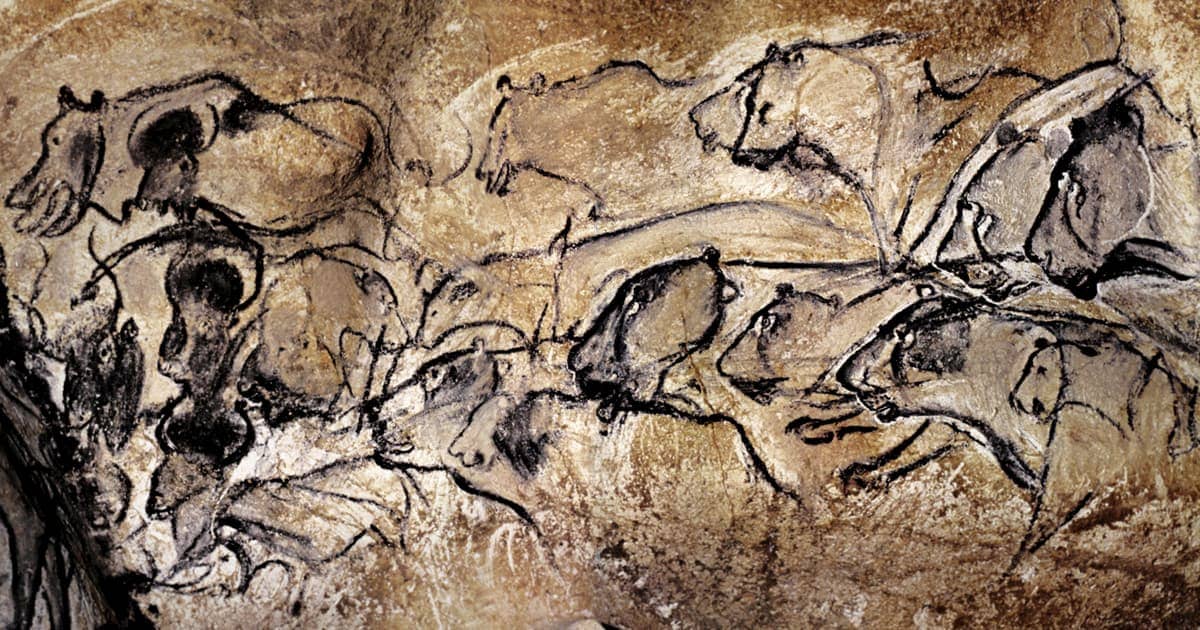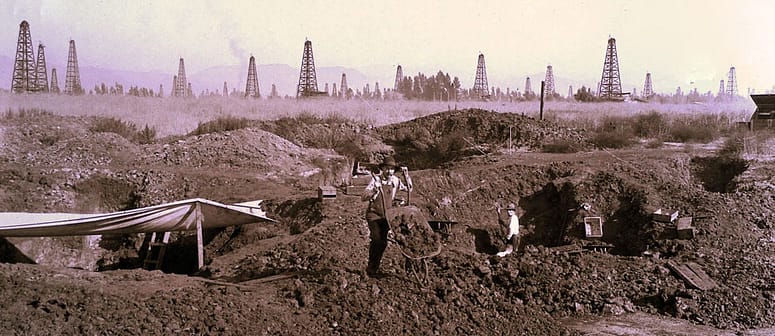There are two views of thought on the actual age of the earth – one is the old-earth calculated to be several billion years and the other is a young-earth with an age of 6,000 years. The old-earth is a secular view and the young-earth is a biblical reference from the Book of Genesis. The following account is the secular earth-age version of when the North American lion and megafauna roamed the continent of North America.
It is a narrative that evolved from interpretations of geology that explained how the earth’s rock layers were formed. This secular scientific view says the earth’s rock layers needed a long period of time to slowly accumulate, and thus was based on modern man’s rate of sediment layering. This secular version became the accepted dogmatic standard by most academic scholars of today as well as the science community at large, and so the biblical claims of a younger earth were rejected.
I have intentionally excluded specific time frames from this pre-historic account simply because of the contradiction regarding the age of the earth. This exclusion is not intended to confuse anyone of the valid existence of the American lion, only to raise the question of what is ‘authentic’ truth when it is only based on human knowledge. Maybe the American lion’s extinction was not 13,000 years ago as reported…maybe it was not that long ago…
… And the young-earth position is another topic that deserves a separate post.
- Post Contents -
THE ICE AGE
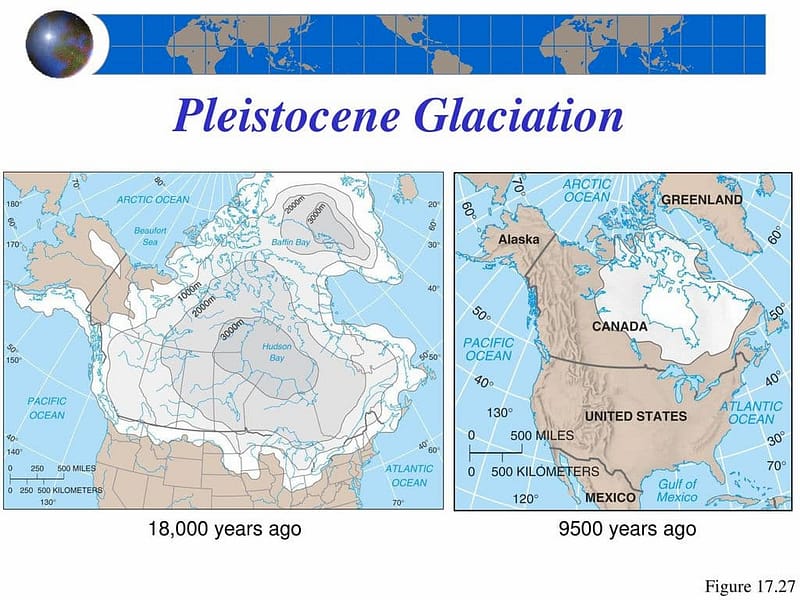
The Pleistocene Epoch, commonly known as the Ice Age, was a period of continued earth cooling that created a series of ice layers over millions of years. The massive ice glaciers advanced and retreated as the earth’s climate fluctuated between cold (glacial) and warm (interglacial). Sea levels rose during the melting periods and then dropped during the ice formation periods exposing land bridges, enabling the migration of animals and humans to cross continents. In this epoch of the Neogene Period, great mammalian megafauna flourished and humans advanced their primitive skills with fire and tools.
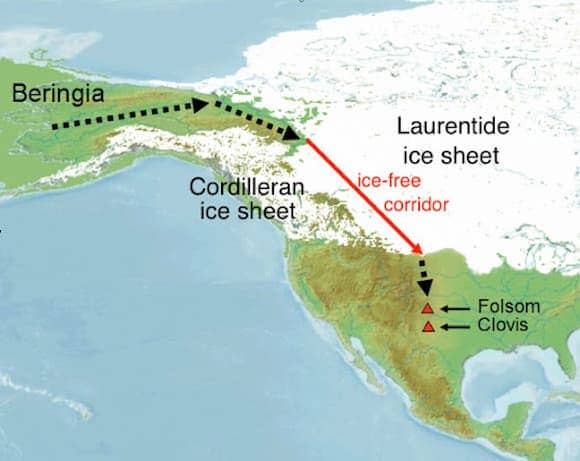

Known megafauna that existed in North America were mammoth (Mammuthus primigenius), mastodon (Mammut americanum), woodland musk ox (Bootherium bombifrons), giant beaver (Castoroides), cave bears (Ursus spelaeus and U. Deningeri), saber-tooth cat (Smilodon fatalis), dire wolf (Canis dirus), woolly rhino (Coelodonta antiquitatis), ancient bison (Bison antiquus), giant deer (Megaloceras), giant ground sloth (Megatherium), Harlan’s ground sloth (Paramylodon Harlani), an armored glyptodont (Glyptodon), American camel (Camelops), the small horse (Equus occidentalis), the giant bird (Teratornis), and the American lion (Panthera leo atrox).
LOS ANGELES TAR PITS
The fossil record of the Pleistocene Epoch is quite expansive on every continent in spite of its short span of time. Numerous fossils of the Pleistocene megafauna were recovered, and one prominent location was the Rancho La Brea asphalt deposits in Los Angeles, California. Such megafauna as the mammoth, mastodon, camel, Harlan’s ground sloth, the small horse, and the ancient bison were all fatally entrapped in the sticky asphalt making escape impossible. Predators like the dire wolf, the saber-toothed cat, the giant bird, and the American lion also shared the same fate as their prey – entombed and preserved in sticky asphalt. Today, over 80 well preserved American lion specimens were retrieved from these tar pits at Rancho La Brea.
NORTH AMERICAN CAVE LION
This now extinct Pleistocene lion from North America is regarded predominantly as a genetically, distinct separate species (Panthera atrox); however, there also is another thought to be considered that this North American lion may instead be a subspecies of the present day lion Panthera leo (Panthera leo atrox). To unify this inconsistency, both scientific taxonomies are used.
The name “Panthera” has been traced to the Sanskrit – an ancient language of India – word for tiger “pundarikam,” and was then modified to Greek. The Latin word “leo” is for lion, and the Latin word “atrox” means cruel or frightful.
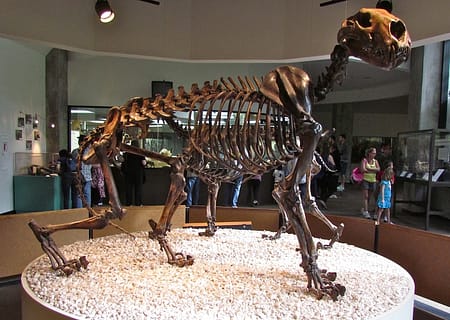
The oldest fossils of the Panthera genus were found in Tanzania. Cave lions (Panthera atrox) during the Pleistocene lived in regions of North America and northern South America as well as in Europe and Siberia. DNA study data from cave lion lineage determined that the cave lion at one time was isolated from the African and Asian lions, and these lineages are genetically very different from our present-day lion. Since the North American lion went extinct years ago, the African lion today is the only surviving lion.
The American lion lived on the North American Plains in the late, second last glaciation – or the early, last interglacial period – as well as at the end of the last glaciation. American lions roamed from Alaska to Peru but were not found in the northeastern U.S. or Canada. Fossils were found in California, Texas, Idaho, Nevada, Nebraska, Mississippi, and North Florida but not South Florida.
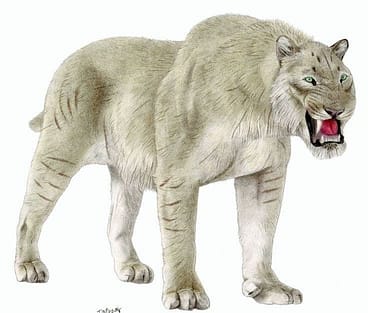
Both the American male lion (518 lbs [235 kg]) and female lion (386 lbs [175 kg]) were estimated to be 25% larger than the present-day African lion. Their head and body length were 5.3 to 8.2 ft (1.6 to 2.5 m), with a tail length of 1.7 to 2.7 ft (.5 to .8 m). Their brain was larger and their legs stronger and longer than the African lion. Their frontal limbs were more powerful with greater flexibility than the African lion, and these physical traits helped them to overpower larger mammals before striking a fatal canine bite. When they hunted, they could reach speeds up to 29 miles (48 km) per hour in bursts but were not built for prolonged chases.
They lived in open habitats rather than forests, and that may have contributed to the prehistoric lion’s migration into North America from Asia. It is very likely that the North American lion’s range was the steppe-tundra as well as the mountain conifer/grasslands. These determinations come from P. atrox fossil sites mixed with present-day animal fossils that still occupy the environments of the steppe-tundra and the mountain grasslands.
Studies proved that the American lion was a social animal because of its skeletal differences between sexes. Yet their fossils from the Rancho La Brea tar pits revealed an almost equal number of both sexes, suggesting the possibility that it was more common for the lion to hunt in pairs or alone, and not in prides. These large cats were the main species in their territory, and conflicts with other large predators such as the saber-toothed cat and giant bear were often and violent. Tooth breakage from such fossils showed this occurrence was common among large predators of the Pleistocene.
In 1979, the frozen carcass of a megafauna, steppe bison, was discovered near Fairbanks, Alaska, which showed fatal injuries by lions. Horses were another likely prey as well as tapirs, camels, deer, and mammoths.
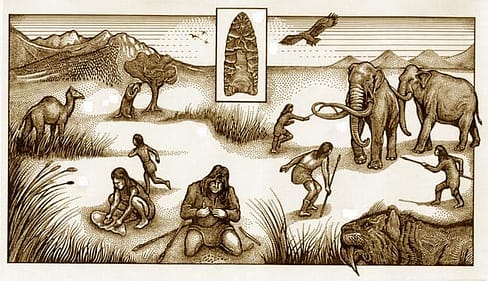
It is likely, though not certain, humans were the predominant predator of the American lion. At an archaeological site at Jaguar Cave, Idaho, bones of American lions were found among the scraps left behind by Paleo-Indians, which indicated that they were hunted and/or eaten. A probable explanation for the American lion’s extinction from North America was the traumatic disappearance of other terrestrial megafaunas from the continent, likely adding to the lion’s inability to sustain its existence from loss of prey.
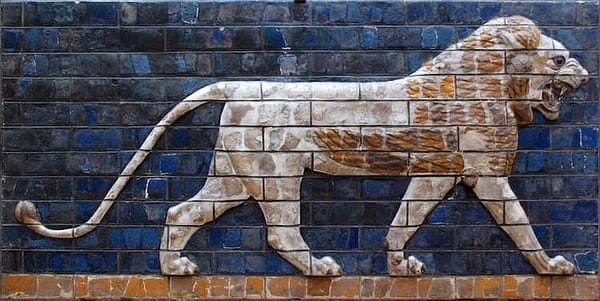
The lion image has been an icon for humans for hundreds of years and still portrayed today throughout civilizations in Asia, Africa, and Europe. Discovered ancient biblical emblems, prehistoric carvings, and cave paintings all depicted lion images as important symbols for early humans. In ancient Mesopotamia, India, Persia, and Tibet the image of the lion represented the symbol of kingship, and today the lion emblem is still closely tied as a prominent symbol for Iran.
Updated 2020
Commentary
The existence of a North American lion poked my curiosity, so I followed its lead and did an investigation into its life on the American continent. My personal library did not have information on the subject, so I needed to search for other sources. I spent a lot of time reading and gathering information on the Pleistocene Epoch, and it was very interesting from a secular point-of-view.
This piece of American history was not taught in school to any great depth, while I was there. We were introduced to the story, but that was about it. I was familiar with land glaciers and the arrival of Homo sapiens, the mammoth, mastodon, and saber-toothed cats, but that is pretty much the extent of my Ice Age knowledge. Most of this history I had discovered from visiting the Museum of Natural History in New York City as well as my local library, but definitely not from the national/state school system. And to think my initial interest in this epoch came from the Indian cave mummy that was inside Mammoth Cave during the 1960s!
References
http://www.fossil-treasures-of-florida.com/american-lion.html
http://www.prehistoric-wildlife.com/species/p/panthera-leo-atrox.html
https://carnivora.net/american-lion-panthera-leo-atrox-t385.html
http://palaeos.com/quaternary/pleistocene.html
http://tigertribe.net/lion/lion-in-culture-symbols-and-literature/
http://ielc.libguides.com/sdzg/factsheets/extinctamericanlion/diet
http://www.prehistoric-wildlife.com/species/p/panthera-leo-atrox.html
